Imagine this: you’re a worker in Rome, toiling away under the burning sun of 1578, digging on the ancient Via Salaria. Suddenly, your shovel strikes something strange. You dig a little further, and what you discover takes your breath away—a vast underground chamber filled with bones, countless skeletons resting in eternal silence.
But here’s the twist: these aren’t just ordinary bones. Word spreads quickly, and soon the Church proclaims that these remains belong to early Christian martyrs. A secret world of catacombs, filled with the dead of a long-forgotten era, has been unearthed. What happened next would not only change the religious landscape of Europe but spark a relic revolution unlike anything seen before.
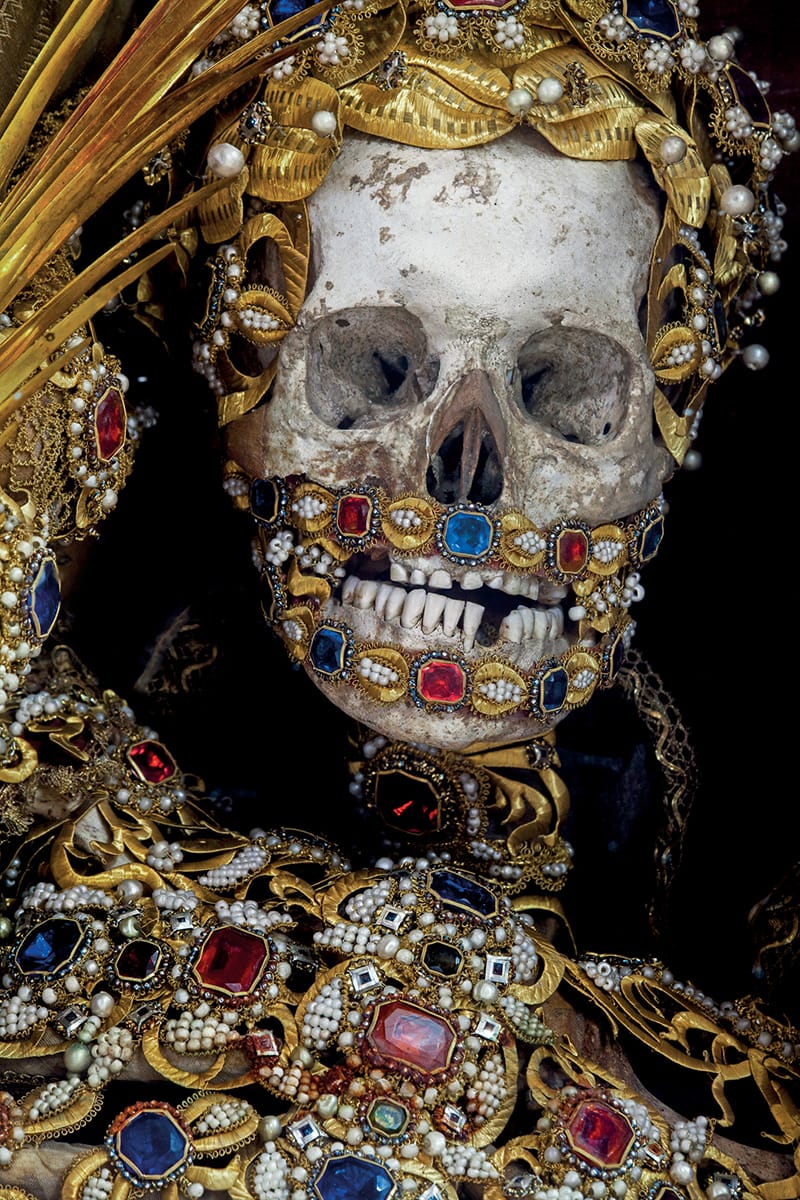
The Mysteries Beneath Rome
The discovery of the Roman Catacombs was not a planned archaeological dig. In fact, the workers on Via Salaria had no idea they were standing atop an ancient burial site that had been sealed off for centuries. Hidden beneath layers of earth and dust, this subterranean labyrinth was like a time capsule, preserving the remains of early Christians who had been buried there long ago.
But why had these tombs been forgotten? And more importantly, what secrets did they hold?
As news spread, the Church quickly intervened. The bones of thousands of individuals were said to belong to the early Christian martyrs—people who had been persecuted and killed for their faith during the days of the Roman Empire. These martyrs had been buried in secrecy, far from the prying eyes of the Roman authorities. But now, their remains were about to see the light of day once again, and they were poised to change the course of religious history.

The Protestant Reformation’s Unexpected Solution
At this moment in time, the Catholic Church was facing a crisis of its own. The Protestant Reformation had swept across Europe, challenging many long-standing traditions of the Church, including the veneration of relics. In many cases, Protestant reformers had destroyed relics in an effort to cleanse their churches of what they saw as idolatry. Countless saints’ bones, icons, and artifacts had been smashed or burned.
But then came the discovery of the catacombs. Suddenly, the Church had access to an entirely new source of relics—bones believed to be those of saints and martyrs. The timing couldn’t have been more perfect.
The bones were carefully exhumed and sent across Europe, to churches eager to replenish their lost relics. But these were no ordinary bones; the Church saw them as physical connections to early saints, a direct link to the divine. But here’s where it gets even more fascinating: these bones were not left in their natural state.
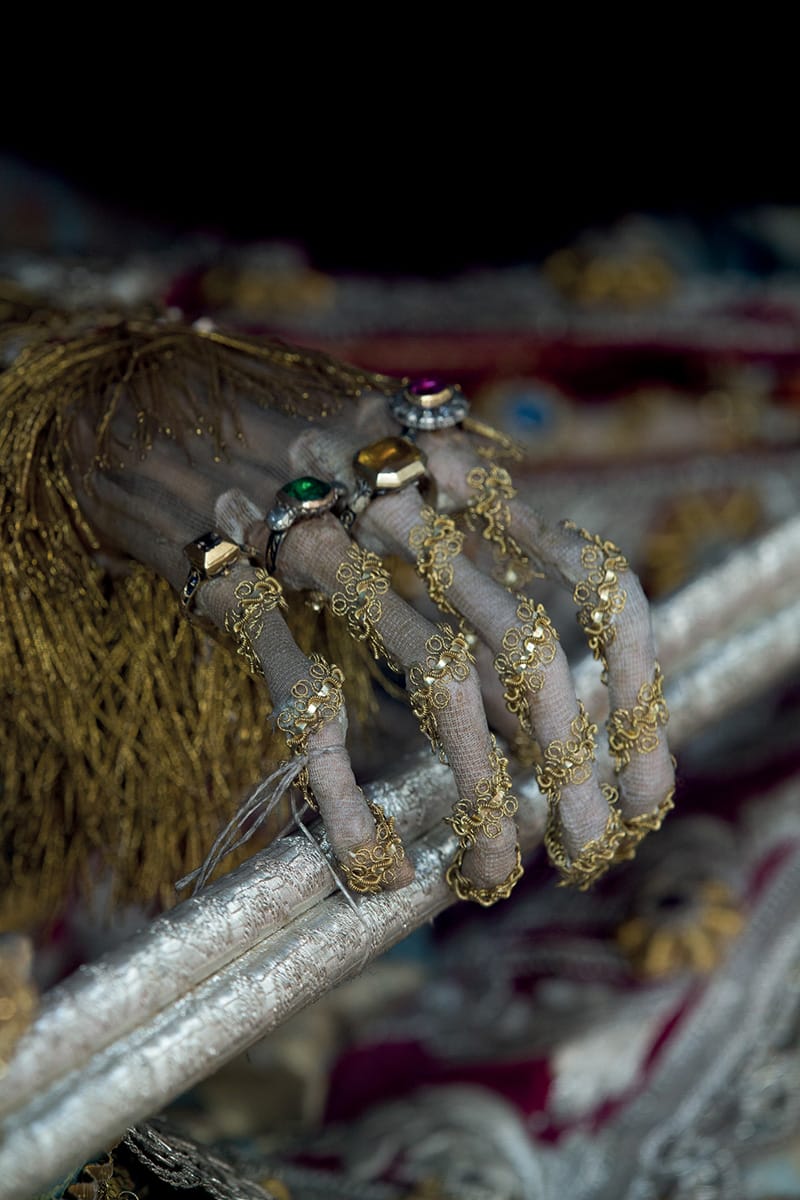
Jewels, Armor, and Gold: A Saint’s Afterlife Makeover
What do you imagine when you think of a saint’s relic? Maybe a simple, modest display in a glass case? Think again.
Once these relics reached their destination, something extraordinary happened. Artisans and jewelers were commissioned to transform these skeletons into lavish, dazzling icons. The bones were carefully pieced back together, each one meticulously placed to form full skeletons. Then, these relics were adorned with gold crowns, armor, intricate lace, and jewels—turning them into glittering displays of faith.
These “catacomb saints” became much more than relics. They were spectacular visual reminders of the glory that awaited the faithful in the afterlife. Every jewel, every stitch of lace, was a symbol of the eternal rewards promised to those who had sacrificed their lives for their faith. But there was something else that intrigued pilgrims and believers: could these relics, dressed in such splendor, truly perform miracles?
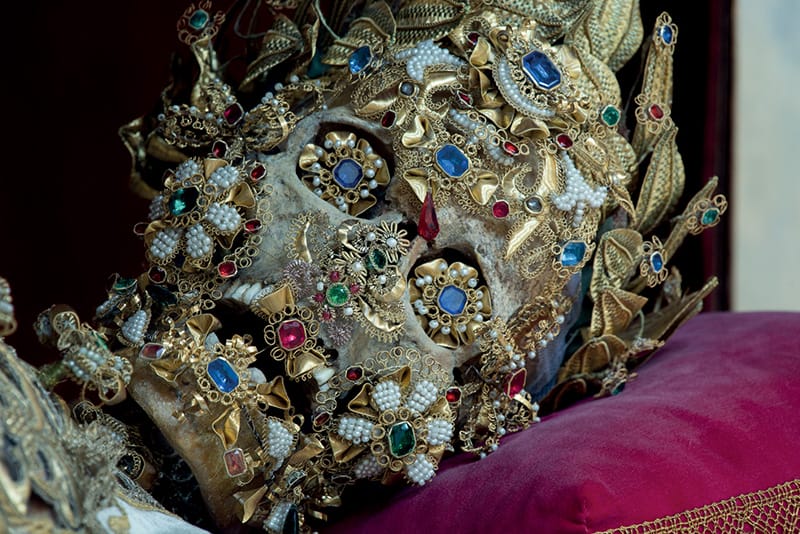
Could the Relics Perform Miracles?
Pilgrims flocked to see these newly adorned relics. It wasn’t just about admiring their beauty—people believed that the catacomb saints held special powers. Many thought that simply being in the presence of these relics could heal the sick, protect against misfortune, or even grant divine blessings.
But not everyone was convinced. As the catacomb relics spread across Europe, some skeptics began to ask uncomfortable questions. Could all of these bones really belong to saints? How could the Church be so sure that these were truly martyrs from ancient Rome, and not just ordinary citizens?
This debate lingered in the background, but for many believers, the relics represented something far more significant than just bones. They were symbols of faith, sacrifice, and the eternal connection between the living and the dead.
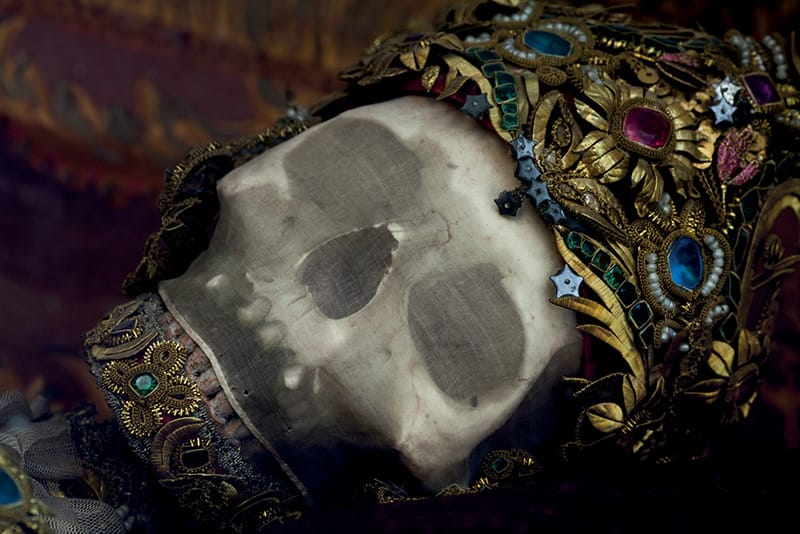
What Happened to the Catacomb Saints?
Fast-forward to today. The once-spectacular displays of these relics have largely disappeared. Many of the catacomb saints have been dismantled or stored away in crypts, no longer at the center of religious devotion. Yet, their story remains one of the most fascinating chapters in the history of Christianity—an era when bones, jewels, and gold came together to symbolize both the faith of the living and the eternal promise of the afterlife.
What would it feel like to stand before one of these saints today, glittering in gold and lace, their bones arranged in meticulous detail? Would you feel a connection to the early days of Christianity, or would you question their authenticity?
The mystery remains—and so does the curiosity.
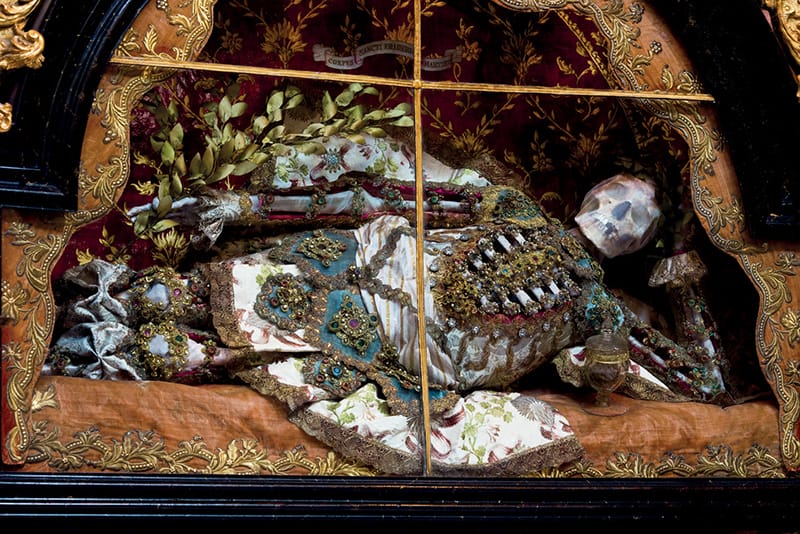
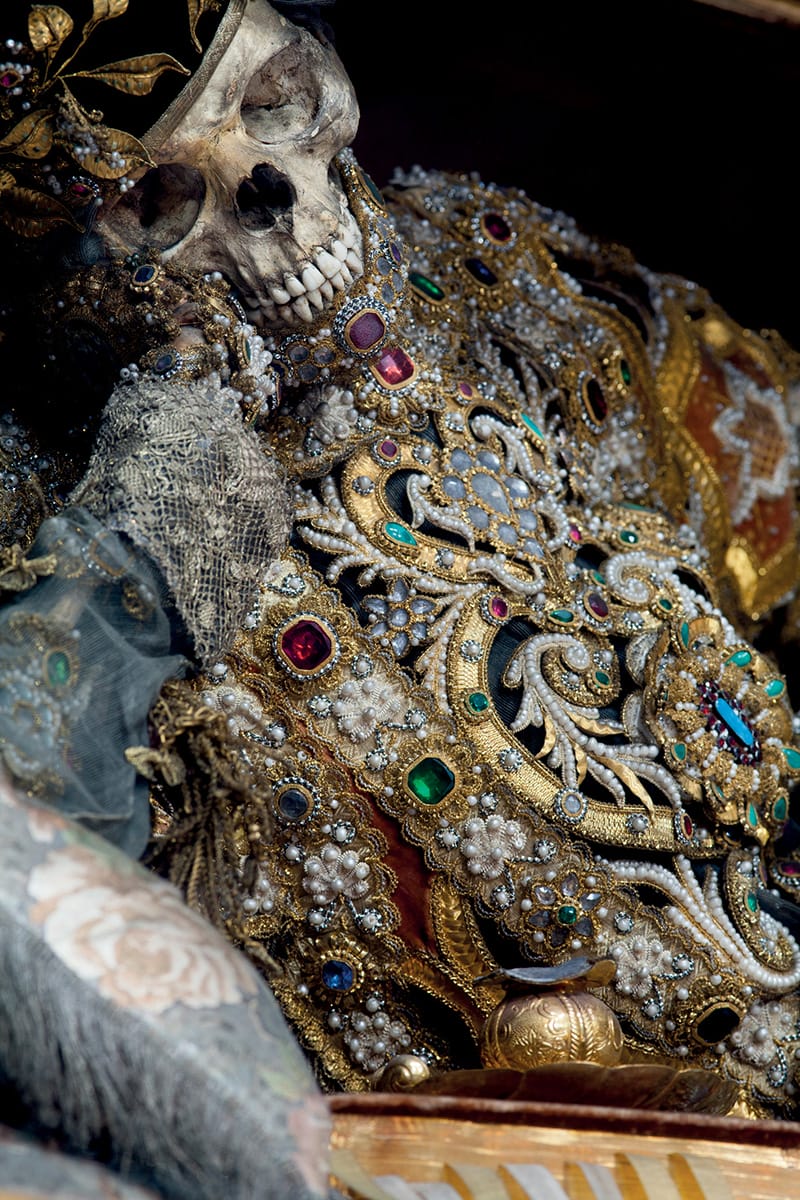



In recent years, photographer Paul Koudounaris, who focuses on capturing images of skeletal reliquaries, mummies, and various aspects of mortality, has gained extraordinary access to numerous religious institutions. This allowed him to photograph these hauntingly beautiful shrines for the first time in history. His work is compiled in a book titled Heavenly Bodies, set to be released by Thames & Hudson next month.

